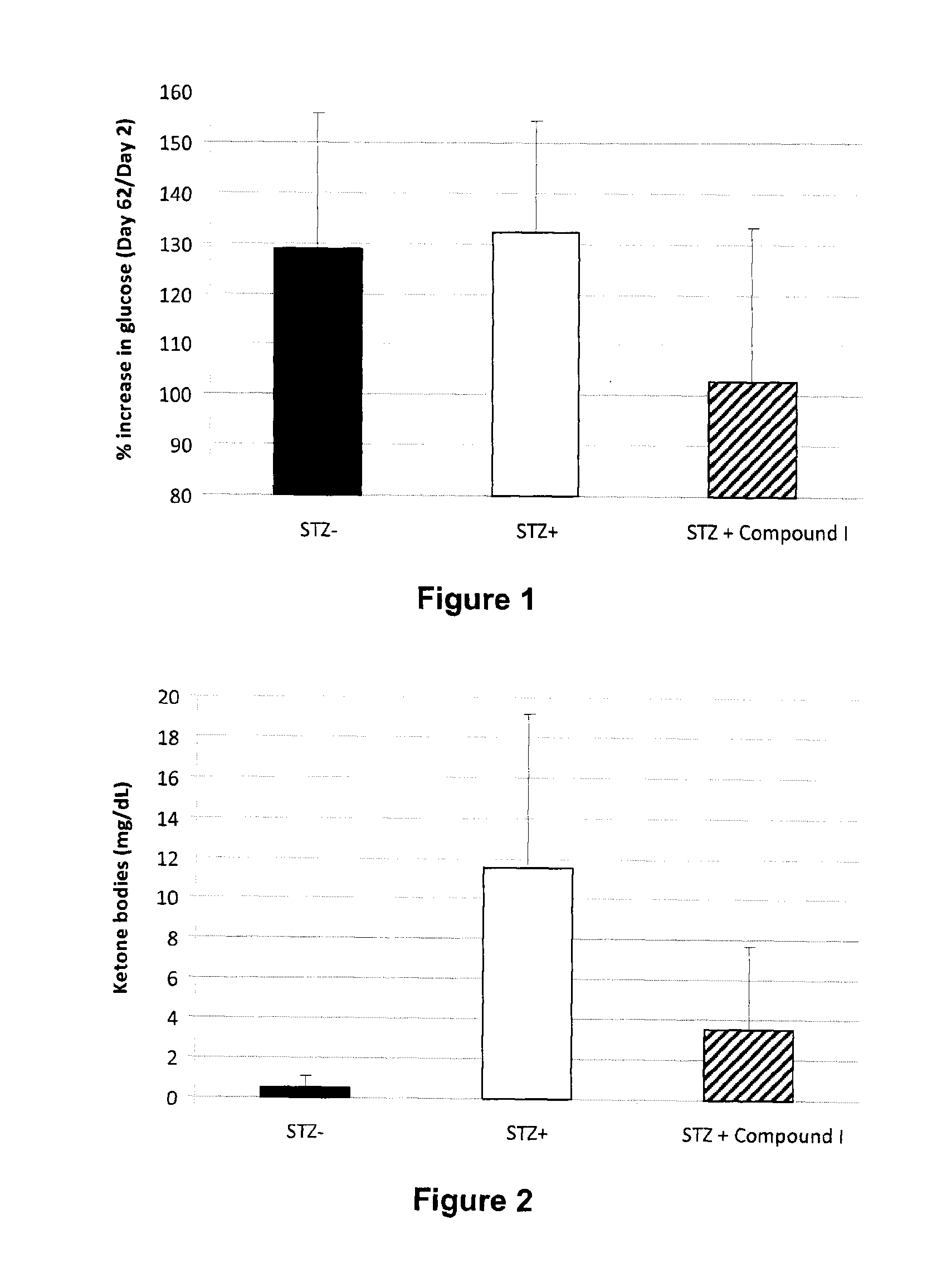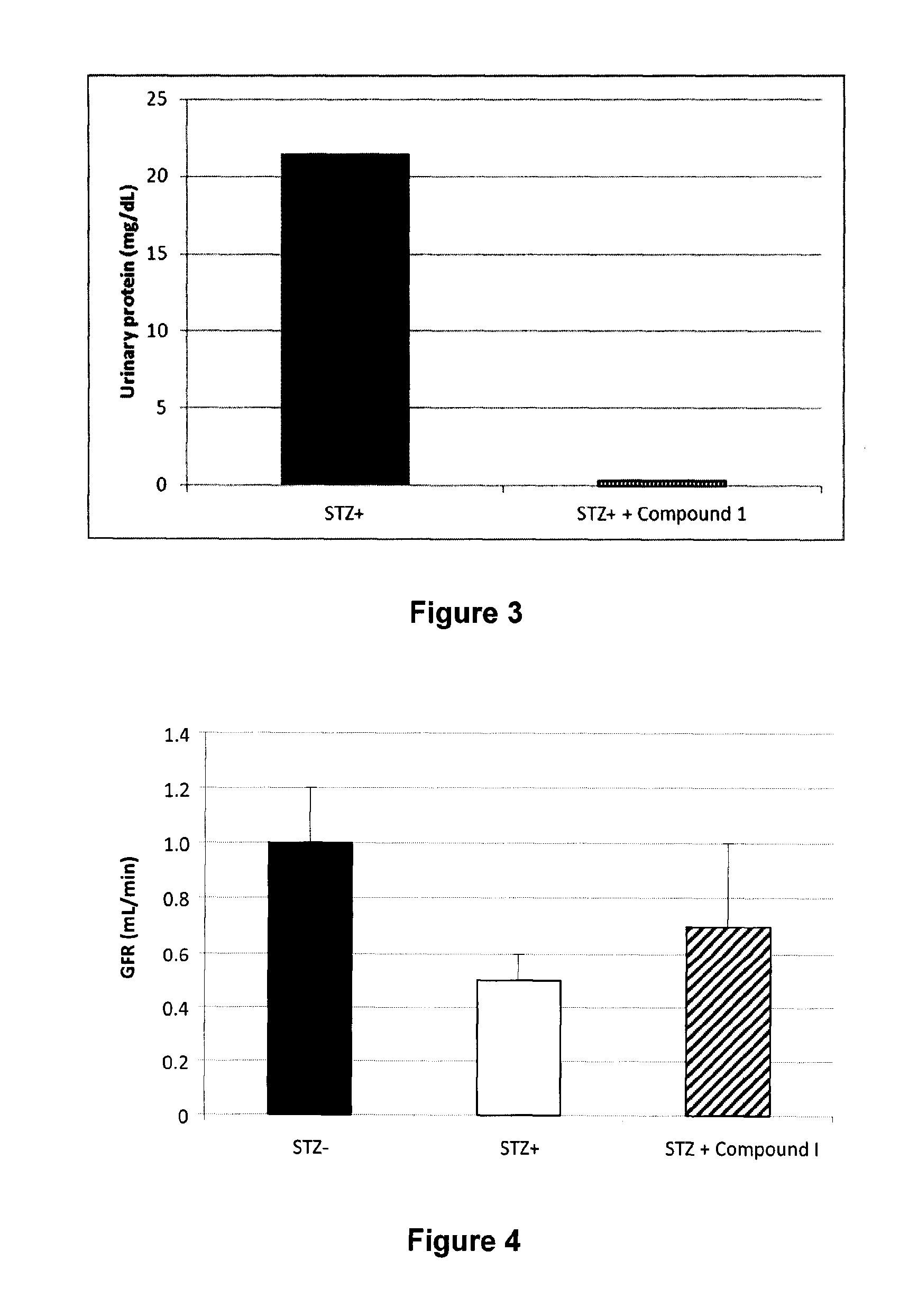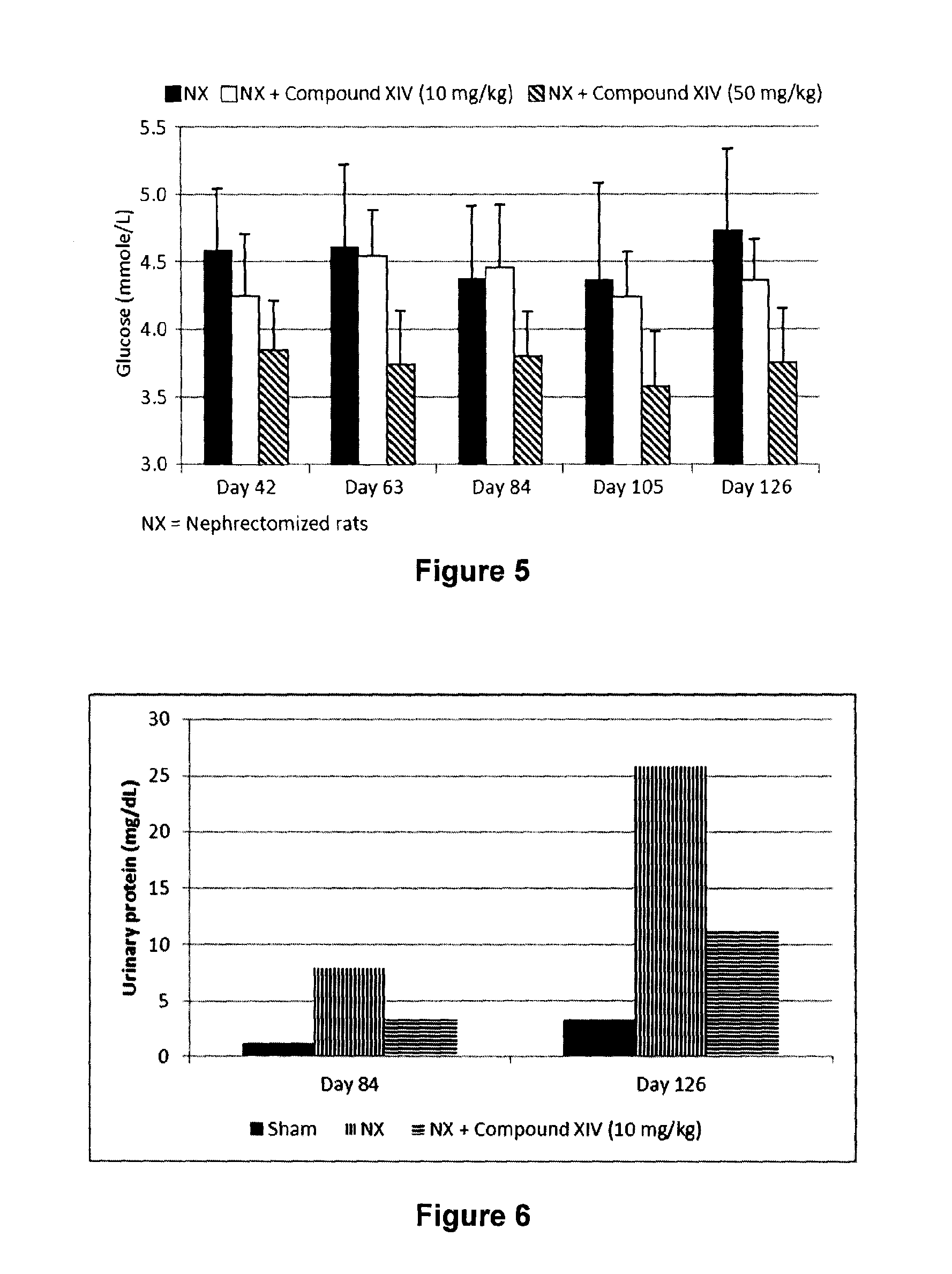Compounds and Pharmaceutical Compositions for Uses in Diabetes
a technology of compound and pharmaceutical composition, applied in the field of medicine, can solve the problems of increased morbidity and premature mortality, increased risk of cardiovascular complications for patients, and increased insulin in stimulating glucose and lipid metabolism in the main insulin-sensitive tissues, so as to reduce the rate of proteinuria, reduce the rate of serum creatinine rise, and reduce the effect of creatinine clearan
- Summary
- Abstract
- Description
- Claims
- Application Information
AI Technical Summary
Benefits of technology
Problems solved by technology
Method used
Image
Examples
example 1
Compound XIV, Sodium (RS)-2-[4-octanoylphenoxy]decanoate
[0166]
[0167]A mixture of 1-[4-hydroxyphenyl]octan-1-one (10.0 g, 45.4 mmol), K2CO3 (9.4 g, 68.1 mmol) and iodine (1.5 g, 9.1 mmol) in acetone (100 mL), was treated with ethyl 2-bromodecanoate (13.9 g, 49.9 mmol), and the reaction was stirred at room temperature, under nitrogen, overnight. Solvent was evaporated in vacuo, and the residue was partitioned between ethyl acetate and water. The organic phase was washed with saturated aqueous sodium chloride, dried over magnesium sulfate, filtered and evaporated in vacuo. The crude material was purified on a silica gel pad, eluted with 5% ethyl acetate / hexane to give ethyl (RS)-2-[4-octanoylphenoxy]decanoate (11.9 g, 62%) as a colourless oil. 1H NMR (400 MHz, CDCl3): δ 7.92 (d, J=9.0 Hz, 2H), 6.89 (d, J=9.0 Hz, 2H), 4.66 (dd, J=7.5, 5.2 Hz, 1H), 4.21 (q, J=7.0 Hz, 2H), 2.89 (t, J=7.4 Hz, 2H), 1.90-2.03 (m, 2H), 1.66-1.74 (m, 2H), 1.43-1.56 (m, 2H), 1.24-1.37 (m, 18H), 1.24 (t, J=7.2 H...
example 2
In Vivo Effect of Compound I on Streptozotocin-Induced Diabetes in Rats
[0190]Demonstration of the in vivo effect by oral administration of Compound I was undertaken in the streptozotocin-induced diabetes model using the following procedure. Diabetes was induced by a single intraperitoneal administration of streptozotocin (65 mg / kg of body weight) in fasted male Sprague Dawley rats, weighing approximately 200-250 g. After 48 hours, rats with plasma glucose more than 10 mmole / L were enrolled and treated with vehicle or compounds.
[0191]Streptozotocin is well known to induce 1-islets toxicity. As shown in FIG. 1, treatment with Compound I (100 mg / kg) decrease significantly (p<0.05) the level of increase in blood glucose (delta) from day 2 to day 62 post-streptozotocin. This result supports the role of compounds of Formula 1, 1A, 1B and 1C as defined herein in preventing and / or treating a diabetes-related disorder and / or a pancreatic disease.
Ketonuria is a medical condition in which keto...
example 3
In Vivo Effect of Compound XIV on Glucose Concentration in the 5 / 6 Nephrectomized Rat Model
[0193]Demonstration of the in vivo protective effect of Compound XIV on serum glucose concentration was measured in the 5 / 6 nephrectomized (Nx) rat model using the following procedure. Male 6 week-old Wistar rats were subjected to 5 / 6 nephrectomy or sham operations. Under fluothane anesthesia, renal ablation was achieved by removing two-thirds of the left kidney followed by a right unilateral nephrectomy 7 days later. Sham rats underwent exposition of the kidneys and removal of the perirenal fat. Animals that underwent the sham operation were given vehicle (saline) and were used as controls. Nx animals were divided in groups receiving the vehicle or Compound XIV. Saline or Compound XIV was given by gastric gavage once daily up to the sacrifice. Serum glucose was measured every three weeks in order to assess the effect of the compound on serum glucose concentration in a renal disease model. Rat...
PUM
| Property | Measurement | Unit |
|---|---|---|
| Fraction | aaaaa | aaaaa |
| Electric charge | aaaaa | aaaaa |
| Electric charge | aaaaa | aaaaa |
Abstract
Description
Claims
Application Information
 Login to View More
Login to View More - R&D
- Intellectual Property
- Life Sciences
- Materials
- Tech Scout
- Unparalleled Data Quality
- Higher Quality Content
- 60% Fewer Hallucinations
Browse by: Latest US Patents, China's latest patents, Technical Efficacy Thesaurus, Application Domain, Technology Topic, Popular Technical Reports.
© 2025 PatSnap. All rights reserved.Legal|Privacy policy|Modern Slavery Act Transparency Statement|Sitemap|About US| Contact US: help@patsnap.com



